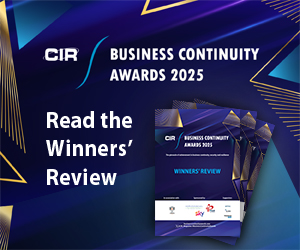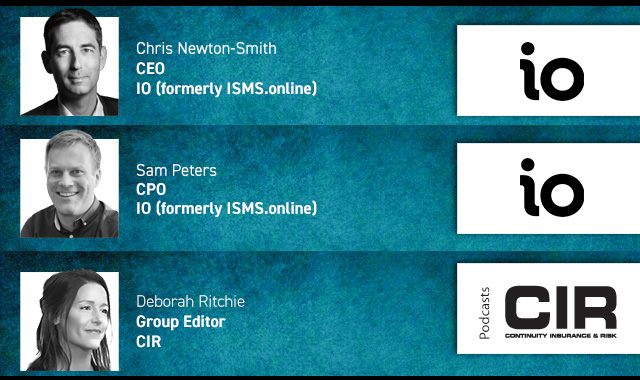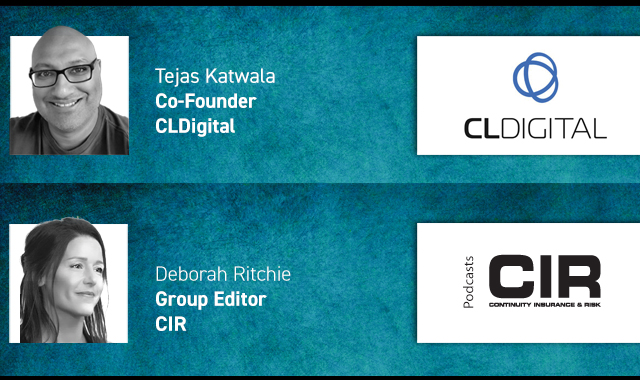Trevor Morton looks at the opportunities and risks surrounding new technologies
It is easy to forget moments when new technology really impressed you. Seeing the very first spreadsheet was one such wow moment. It was in 1980 when VisiCalc landed on these shores. It ran on an Apple II with a meagre 16k of memory. Limited to one active worksheet at time, the display was comparable to the screen of an out-of-date, hole-in-the-wall cash machine. Not surprisingly, it sold over 700,000 copies in six years in what was an embryonic market for desktop computing. By 1996 Steve Jobs, the late CEO and now legendary leader of Apple Computer Inc., cited Visicalc as “one of two real explosions that propelled the industry forward”. The point of the trip down my memory lane is simple: Visicalc was, of its kind, a breakthrough in analysis and reporting and put the spark to the flame for generations to come.
Analysis and report generation from operational systems was the bread and butter stuff of mainframes and mini-computers. Invariably the data provided only a retrospective on the business. Analytic computing took place the confines of universities and secret government locations. But this maverick product with a wacky name to boot, created a new paradigm. It was a tool that could transform the insight required to run a business from “looking over the stern of a ship at the wake” to having a crystal ball. It was the advent of “What if?” analytics and it was gripping stuff. The potential was blindingly obvious. One client, a finance company from the City, took sixteen Apple IIs with VisiCalc at first sitting.
Some years on, analytics for many remains the zenith of computing for business. In a highly connected, multipolar world, analytics is a serious business. Critical to informed decision making processes – be it strategic, tactical, and now at an operational level, analytics means informed data in increasingly large amounts. The potential to support better business decision making by exploiting the new quantitative data alongside traditional data sources is set to extend the benefits of analytics in ways few could have imagined. But research in April 2011 by Accenture points to differing levels of success with analytics. As many two-thirds of US firms surveyed acknowledged their need to improve analytics capabilities. Only one in twelve reported achieving a return on investment. In stark contrast, a survey of 600 C-level and other senior execs of large companies, both in the US and UK, revealed a small but growing number of companies that have developed advanced analytical capability across their organisation. In the report, Getting Serious about Analytics, Accenture confirmed the finding of its research that high-performing businesses were five times more likely to use analytics strategically compared to low performers.
When talking analytics, it is impossible to ignore the rise of big data. Forecasting the size of the digital universe is testing even for seasoned industry analysts such as IDC. Its recent Digital Universe study from December 2012 updated IDC’s forecast of the doubling in size of the digital universe has now reduced to five years. Whilst it reports that the amount of useful data is expanding (it estimates 23 per cent of the global data pool has value to business), currently only an estimated 0.5% of the world’s information is analysed. Data, which includes unstructured content such as video, audio and now social networking data, has a vital role to play in an analytical landscape that now spans multiple channels and types of data. Staggering in size, IDC projects that the digital universe will reach 40 zettabytes (ZB) by 2020, an amount that exceeds previous forecasts by 5 ZBs, resulting in a 50-fold growth from the beginning of 2010. But is there value in this data? In its report, Unlocking the Value of Big Data, in April 2012, sponsored by analytics vendor SAS Institute, the UK’s Centre for Economics and Business Research study identified £216 billion of potential over a five year period to the UK alone.
According to Martyn Kyle, head of insurance at SAS UK and Ireland, “boardrooms are increasingly aware of the significance of Big Data, and how analytics can enable them to drive real business value from that data. For example, general insurers, as with many other sectors, have to deal with fraud on a daily basis. The use of analytics has enabled insurers to improve detection rates by around 50 per cent in the fight against fraud. By being able to determine on application what is a manipulated quote, or if an applicant is part of a network of suspected fraudsters, we can stop the fraud at the door. Downstream, analytics helps to identify fraudulent claims originating from organised criminal networks”. The return on investment after the implementation of one model for a general insurer delivered far in excess of expectations, saving them around £200,000 in a single week on its motor insurance business. Insurers are investing in analytics because they have a greater understanding of its benefits, he adds.
Perhaps the most risk-intensive approach for an organisation seeking efficiency gains is transformational change. The IT component of change can over-run, fall short or fail completely to deliver the required functionality. According to Kyle, “the use of analytics as a decision support tool can negate the need for ambitious IT change programmes and realise benefits in weeks.”
Creating a competence base in analytics to generate insights that support better decision making is not for the faint-hearted. Risks arise when the apparent abundance of data creates a false sense of security. In reality, it is a distraction as immature project teams pursue too many metrics and inevitably, the wrong metrics. New insights are measured by the dozen but to what effect?
Metrics chosen must show a relationship with the decision processes they are required to support. Then, they must be validated. The latter requires the eye of management with in-depth experience of the processes concerned. And, there may be many choices of outcome upstream and downstream in the process. Assuming there’s a strong positive correlation between the metric and the process, the worst outcome is when management choose not to act out of fear. In a December 2008 report Competing Through Business Analytics to Achieve High Performance, Accenture noted that 40 per cent of business decisions were still made based on judgment alone, partly because of the absence of good data. Whilst intuition and experience are a great asset on any management team, in an increasingly complex and volatile world, the unrelenting increase in pace of business demands more fact-based analysis.
The future of analytics is undergoing a sea change. Whilst gradual, it is as significant as the launch of spreadsheets as a tool to aid business forecasting. Computing is gradually moving to real-time such that corporate and other data is updated and immediately available for business intelligence, reporting and controlling the business. A 2012 white paper, produced by Oxford Economics in collaboration with SAP, provides insight into executive perception of real-time business operations and points to the example of LOVEFiLM, a subscription-based video streaming and rental business. Its marketing campaigns are now based on real-time analysis that determines the most popular films on any given day whilst customer accounts are monitored to ensure billing is up to date and to reduce the occurrence of fraud. Technology platforms are the enabler of this always-on processing.
The increasing availability of unprecedented amounts of computing power is bringing predictive analytics nearer and nearer to a real-time activity. In years gone by, analysis and reporting took place in batch mode, frequently running overnight. Analysts were constrained by the number of runs in a year’s work. As a result, analytics remained a backroom operation and the domain of IT, analysts and actuaries. Now, analysts can make ready and run thousands of models in the same time.
A new era in computing is ushering in significant benefits for business users. Computing power has brought the ability to easily mine billions of rows and columns of data from multiple channels and then perform computations in minutes and seconds. Sharing, manipulating and exploring the data in real-time is federated across all stakeholders. Explored through user-friendly and visually engaging interfaces, a collaborative approach to analytics becomes a reality.
Such capabilities don’t come for free, but they shouldn’t be seen in the context of one department or function. As Kyle highlights, “There is recognition that whilst the functions of a business, such as marketing, finance, manufacturing and so on, may speak separate languages, the one thing they do have in common is their data”. Visual analytics, the ability to explore data in real-time and in a collaborative environment has the potential to bring cross-functional teams together to explore ‘What-if’ scenarios based on the analysis of any amount of data. When analytics becomes a team sport, better decision making follows”.
Research in 2012 by the Harvard Business Review into the impact of analytics on organisations saw cost-reduction in the first place at 60 per cent, followed by reduced risks and faster decision making at 55 per cent. The advent of predictive analytics will turn insight into action and help organisations to steer their way looking forward.
But is analytics set to remain only in the domain of large organisations. Not according to the February 4th announcement from leading analytics vendor SAS. Its Visual Analytics is now available for work groups and midsize businesses. The new version of its visual data exploration software combines business intelligence with its best in class analytics and provides new graphical display options and analytical capabilities. Management have instant access – via PCs or tablets – to reports or mobile dashboards that are based on the latest data, allowing them to make quicker, better decisions. Such democratisation of data and the insight it brings is indeed another wow moment.
Printed Copy:
Would you also like to receive CIR Magazine in print?
Data Use:
We will also send you our free daily email newsletters and other relevant communications, which you can opt out of at any time. Thank you.











YOU MIGHT ALSO LIKE